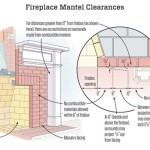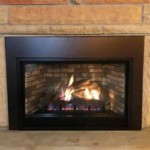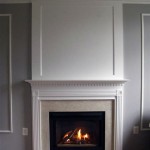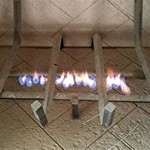Wood Paneling Around Fireplace: A Comprehensive Guide
Fireplaces are often considered the heart of a home, providing warmth, ambiance, and a focal point for gatherings. Enhancing the area surrounding a fireplace can significantly elevate the aesthetic appeal of any room. One popular and timeless approach is the incorporation of wood paneling. Wood paneling around a fireplace not only introduces texture and warmth but also offers a range of design possibilities, from rustic charm to contemporary elegance. This article explores the various aspects of using wood paneling around a fireplace, including its benefits, types, design considerations, installation, and maintenance.
Benefits of Wood Paneling Around Fireplaces
Wood paneling offers numerous advantages when used to frame a fireplace. These benefits extend beyond mere aesthetics, contributing to the overall value and comfort of the living space.
Enhanced Aesthetics: Wood paneling adds a layer of visual interest to a fireplace, breaking up the monotony of a plain wall. The natural grain and texture of wood create a warm and inviting atmosphere. Depending on the type of wood, finish, and paneling style, it can complement a wide range of interior design themes, from traditional to modern.
Improved Insulation: Wood, although not a primary insulator, can provide a small degree of additional insulation. When properly installed with a vapor barrier, wood paneling can help to reduce heat loss from the fireplace area, contributing to energy efficiency. This can be particularly beneficial in older homes with less effective insulation.
Acoustic Dampening: Wood has natural sound-absorbing properties. Installing wood paneling around a fireplace can help to reduce echoes and reverberations within the room, creating a more comfortable and acoustically pleasing environment. This is especially useful in rooms with high ceilings or hard flooring.
Protection of Wall Surfaces: Wood paneling acts as a protective barrier for the wall behind it. It can shield the wall from scratches, dents, and other forms of damage that can occur around a high-traffic area like a fireplace. This can extend the lifespan of the wall and reduce the need for frequent repairs or repainting.
Increased Property Value: Well-executed wood paneling can increase the overall value of a home. It is considered a desirable architectural feature that adds character and sophistication to a living space. The perceived value is often linked to the quality of the materials used and the craftsmanship of the installation.
Types of Wood Paneling for Fireplace Surrounds
The selection of the right type of wood paneling is crucial to achieving the desired aesthetic and functional outcome. There are several distinct types of wood paneling to consider, each with its own characteristics and suitability for different design styles.
Solid Wood Paneling: This is the most traditional and often the most expensive option. Solid wood panels are made from a single piece of timber, showcasing the natural grain and beauty of the wood. Common wood species used for solid wood paneling include oak, maple, cherry, walnut, and pine. Solid wood paneling provides a luxurious and durable finish but is susceptible to expansion and contraction with changes in humidity, requiring careful installation to avoid warping or cracking.
Veneer Paneling: Veneer paneling consists of a thin layer of real wood veneer adhered to a substrate, such as plywood or MDF (Medium-Density Fiberboard). This option offers the look of solid wood at a lower cost. Veneer paneling is less prone to warping than solid wood and can be more environmentally friendly, as it uses less of the precious hardwood. However, it is more susceptible to damage than solid wood and may not be as easily repaired.
Wainscoting: Wainscoting refers to paneling that covers only the lower portion of a wall, typically up to chair rail height. It can be made from solid wood, veneer, or MDF. Wainscoting adds a touch of elegance and sophistication to a room. It is often used in more traditional or formal settings. Using wainscoting around a fireplace can create an elegant and defined focal point.
Shiplap: Shiplap is a type of paneling characterized by overlapping boards that create a distinctive grooved appearance. It is commonly used in farmhouse and coastal-style interiors. Shiplap is typically made from softwood, such as pine or cedar, and can be installed horizontally or vertically. Around a fireplace, shiplap offers a relaxed and rustic aesthetic.
Reclaimed Wood Paneling: Reclaimed wood paneling is made from recycled timber sourced from old barns, factories, or other structures. It offers a unique and characterful look, with knots, nail holes, and other imperfections that attest to its history. Reclaimed wood paneling is an environmentally friendly option that adds warmth and rustic charm to a space. It is particularly well-suited for creating a vintage or industrial-style fireplace surround.
Design Considerations for Wood Paneling Around a Fireplace
Planning is essential for a successful wood paneling project around a fireplace. Several design considerations need attention to ensure the final result complements the room's overall aesthetic and meets practical requirements.
Style Compatibility: The style of the wood paneling should align with the existing interior design of the room. For a traditional setting, solid wood paneling or wainscoting in a classic design might be appropriate. In a modern or contemporary setting, sleek veneer paneling or shiplap could be a better choice. Consider the existing architectural details, furniture, and color scheme to ensure a cohesive look.
Scale and Proportion: The size and proportion of the wood paneling should be appropriate for the size of the fireplace and the surrounding wall. Large panels can overwhelm a small fireplace, while small panels may look insignificant around a large fireplace. Consider the height of the ceiling and the overall dimensions of the room when determining the scale of the paneling.
Color and Finish: The color and finish of the wood paneling should complement the other elements in the room. Light-colored wood can brighten up a space and create a more airy feel, while dark-colored wood can add warmth and drama. The finish, whether it is a natural stain, paint, or varnish, should be durable and easy to maintain. Consider the color of the fireplace surround, the flooring, and the furniture when choosing the color and finish of the wood paneling.
Fire Safety: Fire safety is a paramount concern when installing wood paneling around a fireplace. Ensure that the paneling is installed at a safe distance from the firebox or stove. Check local building codes and regulations for specific requirements regarding clearances around fireplaces. Consider using fire-resistant materials or applying a fire-retardant coating to the wood paneling for added safety. Consult with a qualified contractor or fire safety professional to ensure that the installation meets all safety standards.
Mantel Integration: The integration of a mantel is an essential design consideration. The mantel provides a visual break between the firebox and the paneling and offers a surface for displaying decorative items. The style and size of the mantel should complement the wood paneling and the overall design of the room. The mantel can be made from the same wood as the paneling for a cohesive look or from a contrasting material for added visual interest. Ensure the mantel is securely attached and can support the weight of any items placed on it.
Installation of Wood Paneling Around a Fireplace
Proper installation is crucial for achieving a professional and long-lasting result. While it may be possible to install wood paneling as a DIY project, it is generally recommended to hire a qualified contractor, especially for complex installations or if you lack experience with carpentry.
Preparation: Before starting the installation, prepare the wall surface by cleaning it and ensuring it is smooth and level. Remove any existing trim or molding and repair any cracks or holes. Apply a primer to the wall to improve adhesion and protect against moisture. Gather all the necessary tools and materials, including the wood paneling, measuring tape, saw, nail gun, level, and adhesive.
Measuring and Cutting: Accurately measure the dimensions of the area to be paneled and cut the wood panels to size. Use a saw to make precise cuts and ensure that the edges are smooth and even. Consider the placement of electrical outlets or other fixtures when cutting the panels to avoid any obstructions.
Installation Techniques: There are several methods for installing wood paneling, depending on the type of paneling and the wall surface. One common method involves applying construction adhesive to the back of the panels and then securing them to the wall with nails or screws. Another method involves installing furring strips to the wall and then attaching the panels to the furring strips with screws or nails. Ensure that the panels are level and properly aligned before securing them in place.
Finishing Touches: Once the panels are installed, fill any nail holes or gaps with wood filler and sand them smooth. Apply a finish to the wood paneling to protect it from moisture and wear. Consider using a stain, paint, or varnish, depending on the desired look. Install any trim or molding around the edges of the paneling to create a finished look. Ensure that the trim is properly aligned and securely attached.
Safety Precautions: Always wear safety glasses and gloves when working with wood paneling. Use caution when operating power tools and follow the manufacturer's instructions. Ensure that the work area is well-ventilated to avoid inhaling dust or fumes. If working at heights, use a sturdy ladder or scaffolding and take precautions to prevent falls.
Maintenance of Wood Paneling Around Fireplaces
Regular maintenance is essential for preserving the beauty and longevity of wood paneling around a fireplace. Proper care will help to prevent damage from moisture, scratches, and wear.
Cleaning: Clean the wood paneling regularly with a soft cloth or duster to remove dust and debris. For more stubborn dirt or stains, use a mild soap and water solution. Avoid using harsh chemicals or abrasive cleaners, as they can damage the finish. Always test any cleaning solution in an inconspicuous area before applying it to the entire surface.
Moisture Control: Wood is susceptible to damage from moisture, so it is important to control the humidity levels in the room. Use a humidifier or dehumidifier to maintain a consistent humidity level. Avoid placing potted plants or other sources of moisture near the wood paneling. Wipe up any spills immediately to prevent water damage.
Protection from Scratches: Protect the wood paneling from scratches by avoiding contact with sharp objects. Use felt pads on the bottom of furniture to prevent it from scratching the floor or the paneling. Avoid dragging heavy objects across the floor or the paneling. Consider applying a protective coating to the paneling to reduce the risk of scratches.
Fire Safety Inspections: Regularly inspect the wood paneling for any signs of fire damage or deterioration. Check for cracks, charring, or discoloration. Ensure that the paneling is still securely attached to the wall and that there are no gaps or openings that could allow flames to spread. Consult with a fire safety professional if you have any concerns about the safety of the wood paneling around the fireplace.

25 Best Decorative Wall Paneling Ideas From Designers In 2024

Diy Fireplace Makeover Wood Slat

Wall Panel System With A Wooden Shiplap Appearance

Fireplace Wall With Wooden Panels Remodel Bedroom Design Contemporary

White Wood Panelling Fireplace Design

The Makerista New Home Living Room Wood Paneling Fireplace

How To Replace Wood Paneling With Dry Wall Simple Practical Beautiful

Wood Paneled Fireplace Design Ideas

20 Nature Loving Fireplace Ideas

Architectural Details Decorative Wood Paneling Brick Fireplace Makeover Stacked Stone Fireplaces Remodel








